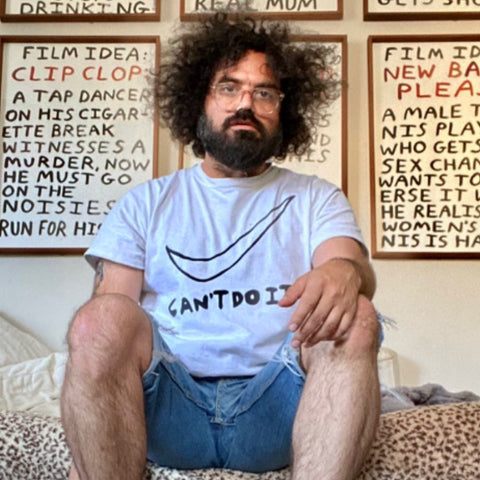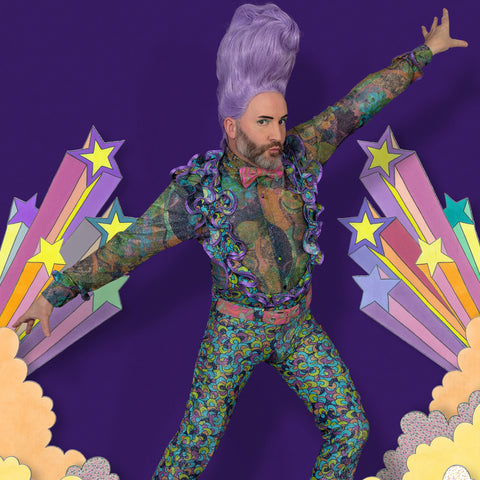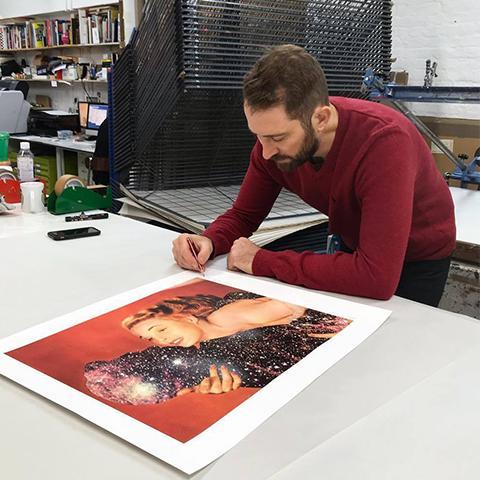It was 100 years ago this year that the first manifesto of the Surrealist Movement was published. The creator of this new school of thought was French writer and poet, André Breton, who defined surrealism as, ‘pure psychic automatism.’
Unlike its precursor, Dadaism, which embraced nonsense, surrealism was defined as, ‘having an interest in psychology, dreams, the subconscious and the unconscious.’ At a time when the world was still reeling from the devastation of World War I, the movement reconnected people to their thoughts and deepest desires, and brought us some of the most significant artists in history, including René Magritte, Frida Kahlo and Salvador Dali.
Since its heyday, the influence of surrealism has endured, with its impact and inspiration felt across all spheres of life, from literature and philosophy to politics and social theory. Given its impact, it’s no surprise that the movement continues to have a huge influence on the contemporary artists of today.
In the week we launch the psychedelic work of Argentinian artist, Mariano Peccinetti, we’re diving into the weird and wonderful world of surrealism to understand its philosophies and how it continues to influence the world of contemporary art.

The Persistence of Memory (1931) by Salvador Dali. © Salvador Dali
The Birth of Surrealism
To truly appreciate surrealist art, it’s important to consider the time period from which is emerged. Back in the 1924, World War I had only recently ended. The collective damage to the psyche of the planet was significant, with many left with existential questions about whether a return to ‘normal life’ was possible.

André Breton in 1924
Around this time, radical new art forms like Cubism and jazz were growing in popularity, showing a collective hunger to create and consume something entirely different.
Significant progress was also being made in the fields of medicine, transport, psychology and radio, and this was inspiring people to rethink the body and mind, and what a future that only recently seemed impossible, might actually have in store.
It was during this period of great grief, but also significant progress and transition, that a movement emerged that involved artists exploring perceptions of reality. In his manifesto, Breton defined surrealism as a means to, “resolve the previously contradictory conditions of dream and reality into an absolute reality, a super-reality.”
And with that thought, an entire movement was born.

The Wounded Deer by Frida Kahlo [1946]
Sweet Dreams
Surrealist artists are known for embracing the inexplicable, using unusual juxtapositions and references to take us into their hearts and heads.
Key surrealist artists like Leonora Carrington, Joan Miró and Max Ernst produced dreamlike and bizarre works, that while initially perplexing, were always infused with deeper meaning about the state of the world, and the artist’s unique experience of it.
 Joan Miró, Catalan Landscape (The Hunter), 1923-1924
Joan Miró, Catalan Landscape (The Hunter), 1923-1924
Let’s now take a look at the four key elements of surrealism and how contemporary artists at Enter Gallery have incorporated them into their modern works.
Exploration of the Subconscious Mind
One of the primary features of surrealism is that it ‘sought to liberate the creative mind from the constraints of reason, and to explore the fantastical realm of the subconscious.’
Some of the most popular artists we have at Enter Gallery have connected with art lovers via works that explore their own inner worlds.
Babak Ganjei is one such example, creating simple, hilarious and often endearing artworks that showcase the ideas he summons within his curious imagination.
Another example of an artist adopting this key element of surrealism is our latest addition, Mariano Peccinetti. This contemporary collage artist states that each of his modern art prints are, “designed to open a portal directly to your subconscious.”
By combining vintage landscape photography from the 50s and 60s with psychedelic colours and patterns, Peccinetti explores: “the unconscious, the spiritual, the inner enquiry and the great inner cosmos of our being. I try to unveil and embody the various messages that an inner journey can bring us, because I believe these messages can enlighten and transform us profoundly.”
Boogaloo Stu is another example of an artist that loves taking the observer into the inner workings of his mind. Step inside his colourful brain and you’ll encounter anthropomorphised shoes and lipsticks and rocket-powered farm animals shooting across candy-coloured skies. In his recent debut collection of ceramics, Boogaloo Stu even brought his imagined characters into our earthly realm, even giving them their own voices.
While surrealist exploration of the subconscious can often be humorous or absurd, the impact of this type of art on society is anything but. By encouraging observers to acknowledge and engage with their innermost thoughts, surrealism has the power to promote introspection, inspire creativity, and to generate more understanding of the complexities that come with being human.
Dream Imagery
Another key aspect of surrealism is its use of dream imagery. This is used by surrealist artists to question the confines and conventions of reality, while also revealing deep truths along the way.

Gilded Bird by Yayoi Kusama
One artist who has used her dreams and visions to build an incredible career is Yayoi Kusama. The iconic Japanese artist turned to art as a tool for healing her mental illness, channelling her hallucinations and personal obsessions into a prolific artistic output.
Across his prolific oeuvre, the late Dan Hillier, is another artist inspired by dream imagery and visuals he experienced during his experimentations with plant medicines, such as ayahuasca. Hillier used this imagery to call us to question our faith and to seek connection with nature.
Similarly, Bonnie and Clyde’s dreamy artworks are full of hints to the artist’s experiences of life. The artist combines real photographs taken during her travels, with motifs like water, that nod to personal experiences. Speaking of the symbolism within her piece, Play to Win, Bonnie and Clyde reveals:
“This is a real-time reflection of my personal journey and how you can use the imagination to carve out your life's direction. It relates to the inside job I did on myself during the 2020/1 year, which involved meditating a lot, getting out into nature and listening to a number of spiritual teachers. The piece features figures, alone and in small groups, passing time contrasting with the area in the top right as the dream of travel to a different reality.”
The Rejection of Rationality and Logic
The third facet of surrealism rejects the rationality and logic that dominated society in the early 1920s, encouraging artists to explore the unexpected, to combine elements that don’t naturally belong together, and to incorporate elements of surprise, humour, and absurdity.
The idea of unusual juxtapositions is demonstrated in the work of contemporary artist, Paul Fuentes - a Mexican artist known for mixing stylish Mid-century architecture and sun-drenched locations with unexpected twists.
In many of his most popular works, Fuentes puts wild animals in places you’d never expect to find them, such as cheetahs enjoying a picnic on the beach, or tigers taking a cooling dip beneath the Palm Springs sun. This playful combination achieves one of the primary aims of surrealism – to create a sense of surprise and wonder at the possibilities of the world.
This rejection of the rational is also demonstrated in the works of Dan Faine – an artist known for removing items, typically pieces of furniture, from their expected context. In each work, Faine uses the colour palette of a famous painting, such as Nighthawks by Edward Hopper, to lend the piece a sense of familiarity that is playfully at odds with its otherwise surreal nature.
Symbolism and Metaphor
Finally, surrealist art often uses metaphor and symbolism to convey deeper meaning, or to make a statement about the world, or someone in it.
Joe Webb is a prime example of a contemporary artist who weaves metaphor into his futuristic collages. By cleverly reworking vintage imagery, Webb weaves new visual narratives, commenting on everything from climate change and war, to love and longing in our modern world.
From looking at just a few examples, it's clear that the ethos of the surrealists is still alive and well in the world of contemporary art. Not only do their philosophies endure, but the rebellious nature of the most infamous surrealist artists continues to connect with contemporary artists in 2024.
It may have been 100 years since it began, but surrealism isn't going anywhere.
Sign up to our newsletter to receive more blogs like this straight to your inbox.

















